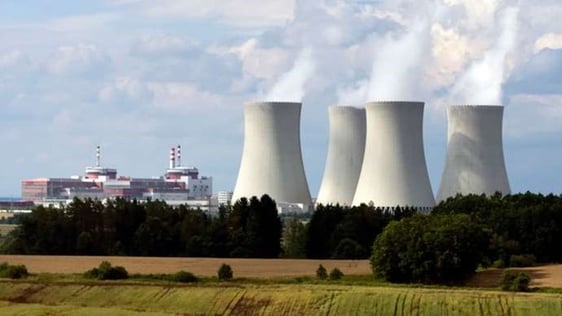“According to our models, an aggressive push toward nuclear and gas would allow total global energy demand to grow by 35% over the next two decades while still cutting carbon emissions by nearly half.”
As we have discussed in recent blogs, moving away from coal toward natural gas would be a great first step in reducing carbon emissions. We believe there is an even better solution that would reduce emissions much further.
Any serious proposal to reduce the carbon intensity of energy needs to have several characteristics. It must be:
- Very energy efficient as measured by EROEI
- Able to supply baseload power and avoid intermittency
- Scalable to meet ongoing global energy demand growth
- Low-carbon or carbon-free.
The only source that meets these criteria is nuclear fission.
A modern reactor generates electricity with an EROEI of nearly 100 compared with 30 for gas and 1–4 for renewable. As a result, only 1% of the generate electricity is consumed internally compared with 3% for gas and 25–60% for renewable energy.
If per capita energy demand rises by 12% (instead of falling by 25%), carbon intensity would need to fall by two-thirds to keep total emissions to within 15 tonnes and limit atmospheric CO2 to within 450 ppm. Only a combination of nuclear energy and efficient natural gas can hope to get close.
In future podcasts, we will outline a possible energy plan that would use nuclear and gas to dramatically reduce CO2 intensity while retaining oil as a key transportation fuel. Crude is extremely energy dense per kilogram, making it invaluable in powering things like cars, trucks, and planes.
According to our models, an aggressive push toward nuclear and gas would allow total global energy demand to grow by 35% over the next two decades (instead of falling per the IEA) while still cutting carbon emissions by nearly half.

Image Source: Britannica.com
Such a plan would save nearly $30 trillion, some of which could then be used to pursue the more promising carbon-mitigation technologies. While still in the early stages, there are some very exciting companies advancing various new solutions. Boston Metal and Ambri were both founded by Professor Donald Sadoway, John F. Elliott Professor of Materials Chemistry at the Massachusetts Institute of Technology (and presenter at the 2018 Goehring & Rozencwajg Investor Day).
Boston Metal is exploring ways to produce carbon-free steel (8% of global emissions) and has just secured a $50 mm investment from mining giant BHP. Ambri is developing a liquid metal battery better suited for grid level storage that shows early promise. Another area that shows promise is cement manufacturing. CarbonCure injects CO2 into the cement stream to strengthen concrete. The process has two benefits. First, the captured and injected CO2 is not released into the atmosphere. Second, cement per tonne of concrete is reduced by 5%. Cement manufacturing represents 8% of all carbon emissions and so any reduction would be meaningful. Many of these technologies are early stage and their eventual success is far from uncertain. However, our research tells us that taken collectively these technologies are much more intriguing than the current portfolio of wind, solar, EVs, and fuel cells that we expect will continue to disappoint.
There are signs that perhaps investors and policy makers are beginning to appreciate the limitations of the current “green” transition. The Biden administration has taken the most favorable view on nuclear power in decades. Delaying nuclear closures (currently rumored) would be a huge step in the right direction. On the investment side, we are extremely impressed by the work being done at Breakthrough Energy Ventures. Founded by Bill Gates, BEV seems to understand the nuances of the energy transition. It is no surprise that BEV is heavily invested in nuclear power along with several of the technologies we discuss above.
For more of our own thinking on what a feasible carbon emission reduction plan must entail, we encourage you to read our Q4 2020 commentary.


